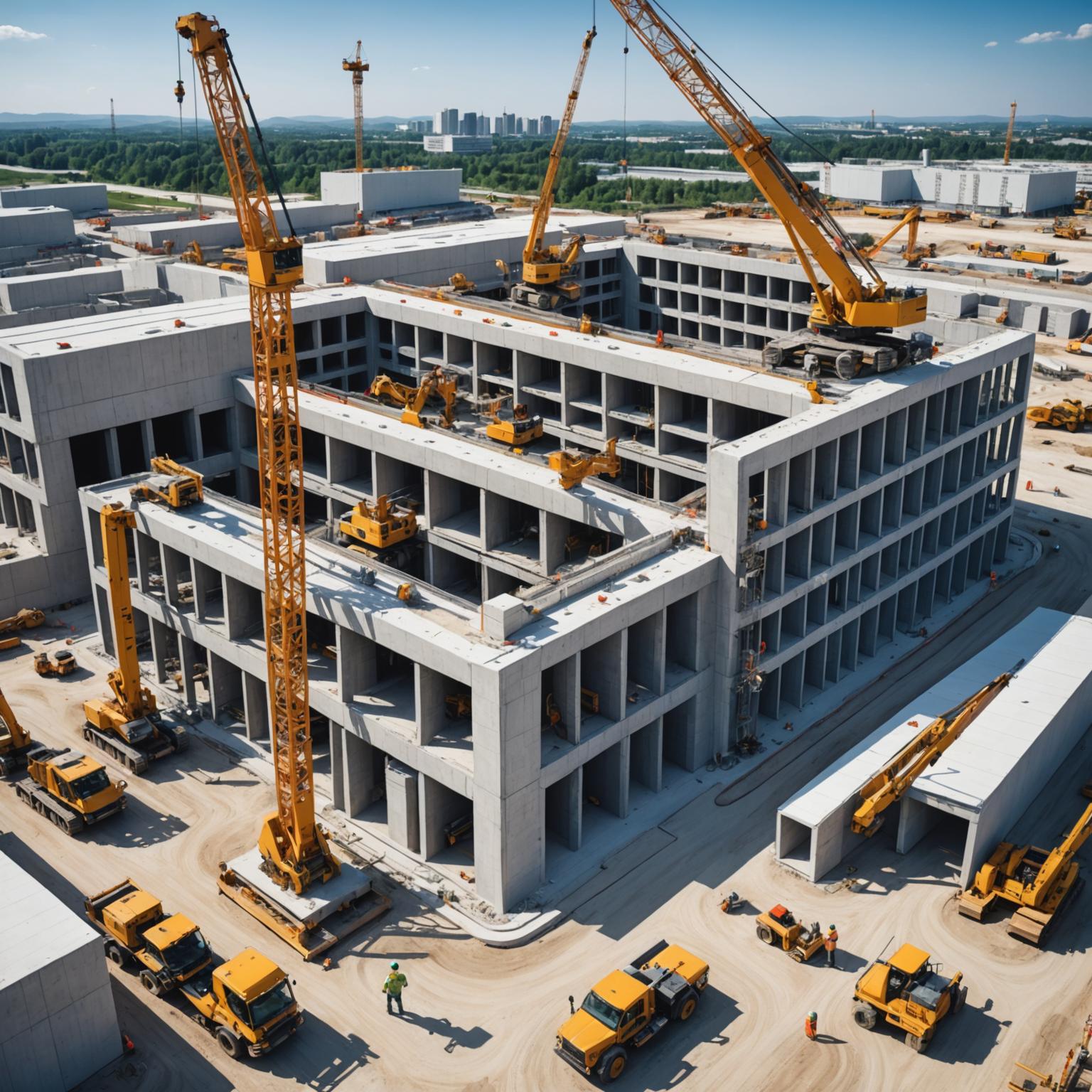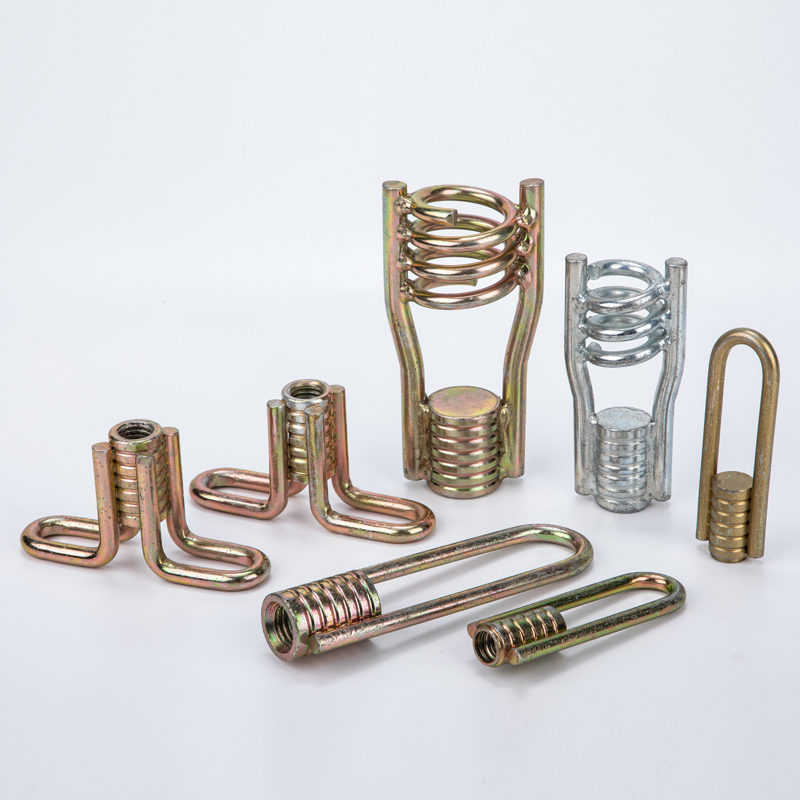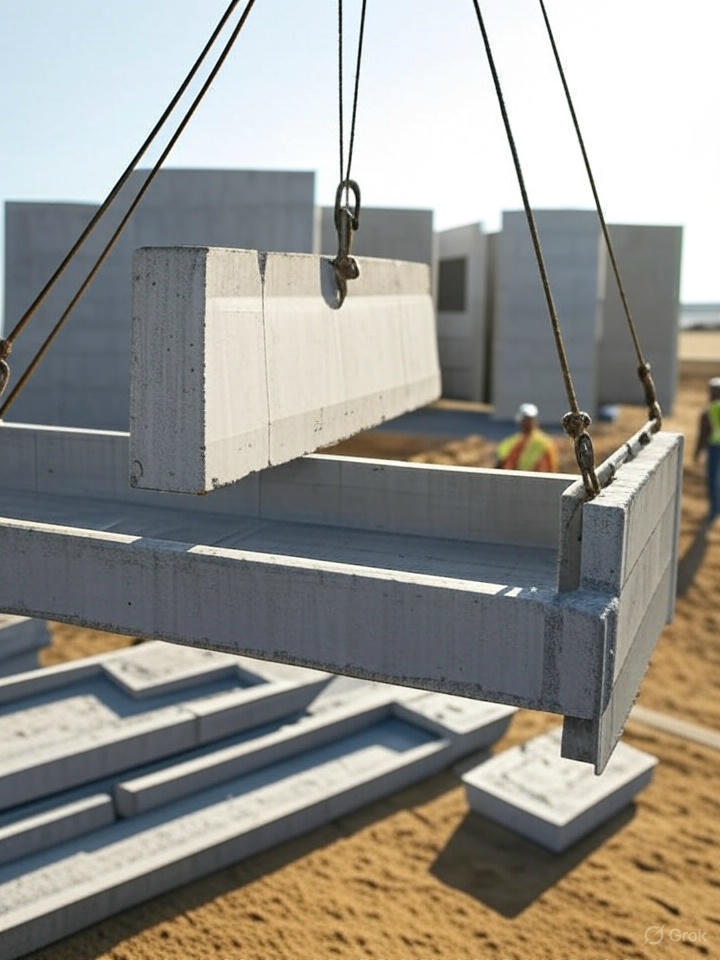Lifting Loops: Your Guide to Safe and Efficient Precast Concrete Lifting
What Are Lifting Loops?
Lifting loops, also known as precast lifting loops or concrete lifting slings, are high-strength components used to lift precast concrete elements such as panels, beams, and columns. Typically made from steel wire rope or synthetic fibers, these embedded lifting loops provide secure attachment points for cranes and hoists. Their cost-effectiveness, durability, and compliance with safety standards like AS3600 and EN 12385-4 make them indispensable in construction. This guide explores the benefits, types, safety tips, and applications of lifting loops, helping you choose the best solution for your project.
Why Choose Lifting Loops for Precast Concrete?
The global precast concrete market is booming, especially in regions like the Asia-Pacific and Middle East, where infrastructure projects drive demand. Lifting loops offer a reliable, economical solution for handling heavy concrete elements. Whether you're working on precast concrete panel lifting or heavy-duty bridge construction, lifting loops ensure safety and efficiency without the need for complex hardware.
Key Benefits of Lifting Loops
Lifting loops provide multiple advantages for construction projects:
-
Cost-Effective Lifting Solutions: Compared to other lifting systems, precast lifting loops require minimal additional equipment, reducing costs.
-
High-Strength Performance: Steel wire rope lifting loops, like those from Ancon LinkPro, support loads up to 57 tons, ideal for heavy-duty applications.
-
Versatility: Available in various sizes and materials, lifting loops cater to diverse needs, from small panels to large precast beams.
-
Corrosion Resistance: Galvanized or synthetic lifting loops withstand harsh environments, ensuring longevity.
-
Safety Compliance: Designed to meet standards like AS3600 (Australia) and EN 12385-4 (Europe), they ensure reliable performance under load.
Types of Lifting Loops
Choosing the right lifting loop depends on your project’s requirements. Here are the main types:
-
Steel Wire Rope Lifting Loops: Perfect for heavy-duty lifting loops for construction, such as precast beams or bridge segments. They offer high tensile strength and durability.
-
Synthetic Lifting Loops: Lightweight and corrosion-resistant, these are ideal for smaller precast elements or projects requiring flexibility.
-
Single-Use vs. Reusable Loops: Brands like Terwa offer single-use loops (e.g., TBL series) for maximum safety, while reusable loops require strict inspection protocols.
-
Color-Coded Loops: Many suppliers, such as SafetyLiftinGear, use color coding to indicate lifting loop load capacity, simplifying on-site selection.
Safety Guidelines for Lifting Loops
Safety is critical when using concrete lifting slings. Follow these lifting loop safety standards to prevent accidents:
-
Verify Load Capacity: Ensure the lifting loop’s working load limit (WLL) exceeds the concrete element’s weight, accounting for dynamic loads. For example, a 10-ton load requires a loop rated above 10 tons.
-
Maintain Proper Lifting Angles: Keep lifting angles between 45° and 60° to avoid excessive stress. Refer to lifting loop angle guidelines for best practices.
-
Inspect Before Use: Check for wear, corrosion, or fraying in steel wire rope loops. Replace damaged loops immediately.
-
Correct Embedding: Ensure embedded lifting loops are properly anchored in the concrete to prevent pullout during lifting.
-
Adhere to Standards: Use AS3600 compliant lifting loops or EN 12385-4 lifting loops to meet regional safety requirements.
Best Practices for Lifting Loop Installation
To optimize performance, follow this lifting loop installation guide:
-
Plan the Lift: Calculate the concrete element’s weight and center of gravity to determine the number and placement of lifting loops.
-
Use Compatible Hardware: Pair loops with shackles or hooks that match their load rating.
-
Train Workers: Ensure personnel are trained in safe lifting loops for concrete panels and other applications.
-
Store Properly: Keep loops in a dry environment to prevent corrosion, especially for reusable loops.
-
Choose Trusted Suppliers: Work with reputable brands like SafetyLiftinGear, Slingco, or Terwa for quality assurance.
Applications of Lifting Loops
Lifting loops are versatile and used in various construction scenarios:
-
Precast Concrete Manufacturing: For lifting precast concrete panels, beams, and columns.
-
Bridge Construction: High-strength lifting loops for bridge construction ensure safe handling of heavy segments.
-
Building Projects: Ideal for installing wall panels, floor slabs, and structural components.
-
Infrastructure Projects: Used in tunnels, highways, and airports, particularly in regions like the Middle East, where lifting loops for Middle East construction are in high demand.
Lifting Loops in Asia-Pacific and Middle East
The Asia-Pacific region, driven by rapid urbanization, sees significant use of precast lifting loops in Asia-Pacific for projects like high-rise buildings and metro systems. Similarly, concrete lifting loops in Saudi Arabia are popular for precast concrete applications in large-scale infrastructure, thanks to their efficiency and reliability.
How to Choose Lifting Loop Suppliers

Selecting the right supplier is crucial for project success. Consider these factors:
-
Product Range: Choose suppliers offering a variety of lifting loops for precast beams, panels, and other elements.
-
Certifications: Ensure products meet concrete lifting safety standards like AS3600 or EN 12385-4.
-
Availability: Opt for suppliers with reliable stock and delivery, such as SafetyLiftinGear or Slingco.
-
Support: Look for technical guidance to select the right lifting loops for your project.
-
Online Purchasing: Many suppliers offer options to buy lifting loops online, with bulk discounts or leasing for cost savings.
FAQ: Common Questions About Lifting Loops
How to Choose Lifting Loops for Precast Concrete?
Select loops based on load capacity, material, and project requirements. For heavy loads, opt for steel wire rope lifting loops; for corrosion-prone areas, choose synthetic loops.
Are Lifting Loops Reusable?
Single-use loops, like Terwa’s TBL series, are designed for one-time use to ensure safety. Reusable loops require rigorous inspection before each use.
What Are the Best Lifting Loops for Bridge Construction?
High-strength loops, such as Ancon LinkPro, with capacities up to 57 tons, are ideal for lifting precast beams and bridge segments.
Conclusion
Lifting loops are a cornerstone of safe and efficient precast concrete lifting, offering unmatched reliability and cost-effectiveness. From precast concrete panel lifting to heavy-duty lifting loops for construction, these components are vital for modern construction projects. By following safety guidelines, choosing the right type, and partnering with trusted suppliers like SafetyLiftinGear or Slingco, you can ensure seamless lifting operations. Whether you’re in the Asia-Pacific, Middle East, or beyond, lifting loops are the key to lifting success.
Ready to lift smarter?Explore high-quality lifting loops from top suppliers and elevate your construction projects today.
Keywords: Lifting loops, precast lifting loops, concrete lifting slings, steel wire rope lifting loops, embedded lifting loops, construction lifting solutions, lifting loop load capacity, concrete lifting safety standards, AS3600 compliant lifting loops, EN 12385-4 lifting loops, lifting loop angle guidelines, lifting loops for precast beams, precast concrete panel lifting, lifting loops for infrastructure projects, heavy-duty lifting loops for construction, Ancon LinkPro lifting loops, Terwa lifting loops, SafetyLiftinGear lifting solutions, Slingco concrete lifting products, buy lifting loops online, lifting loops for Middle East construction, precast lifting loops in Asia-Pacific, concrete lifting loops in Saudi Arabia.







